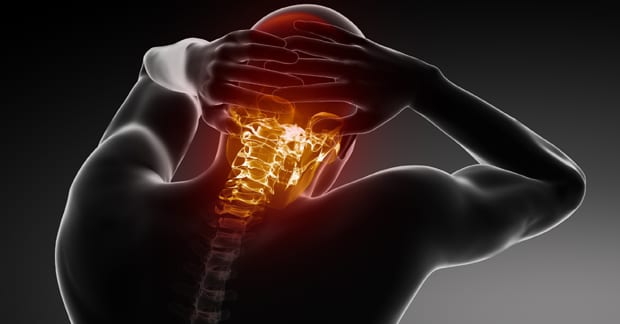Chronic headaches are a mystery to most of us. Why they occur seems to be the most common question. Some patients' headaches can be easily explained, but many seem to get headaches for no apparent reason. An often overlooked cause of headaches is the spine and spinal trauma. How does this occur?
Delicate connective tissue link the muscles in your neck area around your spinal cord. One theory is that tensions can develop in these structures producing head pain. Another possibility to consider is that of forward head posture.
Forward head posture is present when the head is thrust forward in the classic bad posture pose (a little like a turtle neck), taking out the natural curve in the neck. Since the head is quite heavy (10-14 lbs), the muscles in the back of the neck have to counter this weight. When the neck muscles resist the load of the head, they can develop tensions, knots (trigger points), and sometimes spasms.
Another cause for headaches is a joint injury/sprain that can occur after whiplash trauma. Over time, this may lead to joint blockage where there is not the normal free and fluid motion from side to side. In many cases, other joints must compensate for this lack of movement with hypermobility. In reaction, your muscles can become tense in these areas to protect the spine from unnatural movements.
Since these types of disorders are so common in society, they should be ruled out before leaning towards long-term pharmaceutical treatments. It is always important to have an accurate diagnosis before proceeding with treatment. If your headaches have become chronic and just never seem to go away, it is a sign that you are not getting at the cause of the problem.
Correcting neck disorders when they occur is always the best choice. But when a headache seems to come out of nowhere and there is a history of neck trauma in your past, treating the neck can and should be a part of your headache management strategy. At the minimum, the neck needs to be examined.
Chiropractic care has been shown in multiple clinical trials to help patients with both tension-type and migraine headaches. In these studies, the neck or cervical spine is adjusted based on local problems of poor posture and mobility.


